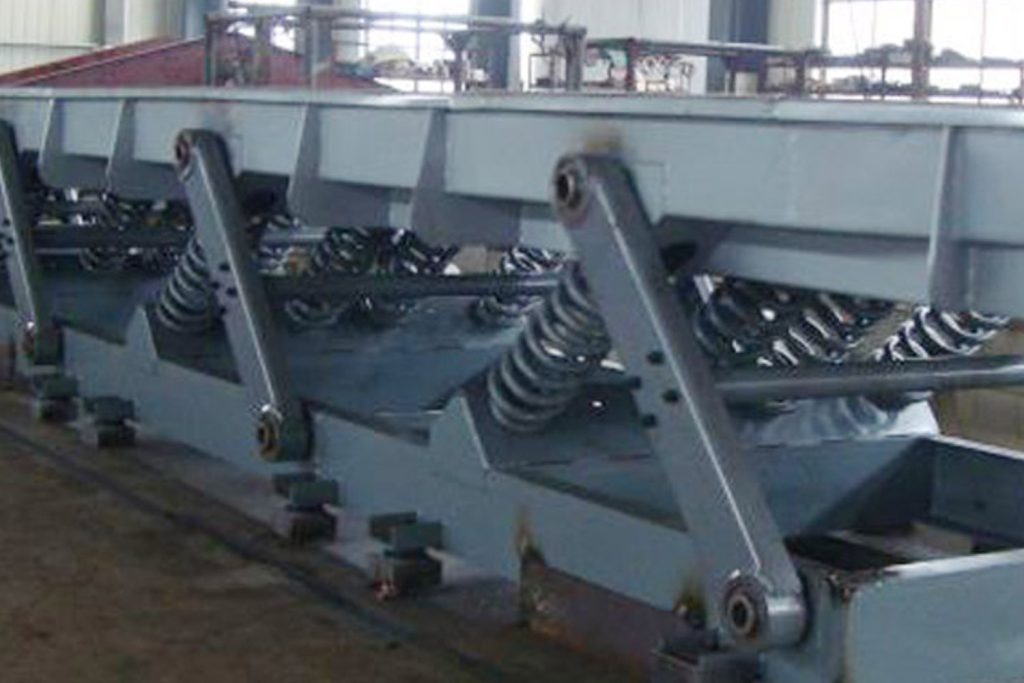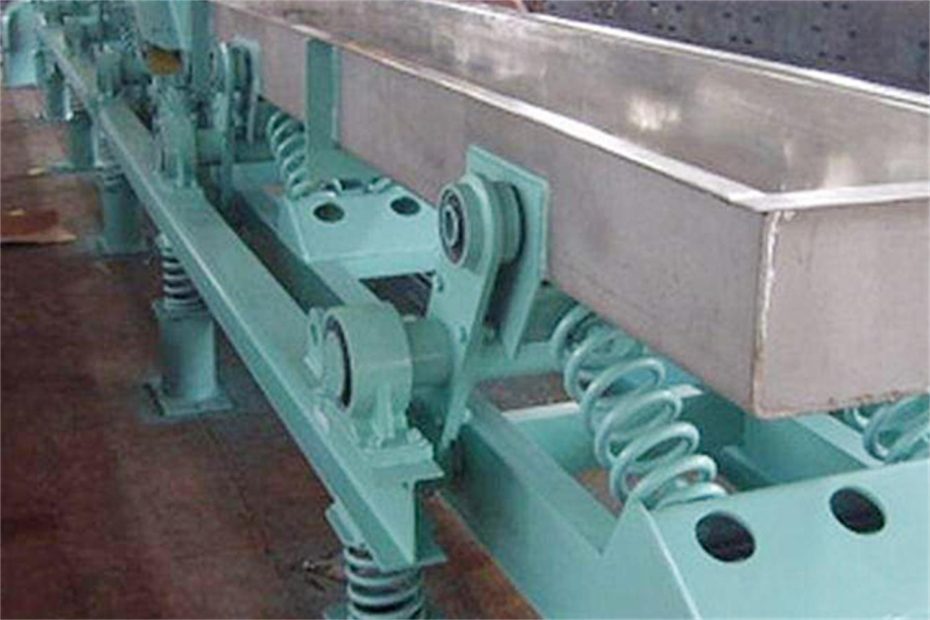Vibrating conveyors offer efficient and versatile material handling solutions across a wide range of industries. The design of a vibrating conveyor is crucial to ensure optimal performance and capacity. Several key design considerations must be taken into account when selecting a vibrating conveyor, including the material properties, desired throughput, operational requirements, and environmental factors. Additionally, various factors can affect the capacity of a vibrating conveyor, influencing its ability to handle and transport materials effectively.
vibrating conveyor provide efficient and reliable material-handling solutions for many industries, including mining, food processing, chemical production, and recycling. Their unique design uses controlled vibration to move materials smoothly and continuously.
What Is a Dual-Mass Linkage Vibrating Conveyor
A dual-mass vibrating conveyor, also called a linkage vibrating conveyor, belongs to the vibrating conveyor family. It generates linear vibration through an eccentric shaft, linkage rods, and a spring system. This vibration drives the trough in a reciprocating motion and moves materials in a controlled direction. The design uses isolation springs to form a dual-mass structure, which reduces high-frequency vibration and supports high-precision conveying.
A dual-mass vibrating conveyor consists of two main vibrating masses: the carrying mass (the trough and material) and the exciting mass (the base or balancing frame). Linkage rods or spring linkages connect the two masses. A vibration motor or exciter drives both masses to create a specific vibration pattern that moves material forward along the conveying direction.
The term “dual mass” refers to two independent yet interconnected mass systems—typically the trough with material and the base or balance frame. The “linkage rods” connect the two masses and may be rigid rods or elastic elements such as leaf springs or coil springs. These rods transfer vibration and control the movement path.
Typical Components Of Dual-Mass Vibrating Conveyor
- Conveying Trough (Carrying Mass)
- The trough holds and carries the material.
- Common designs include open troughs or tubular troughs made from carbon steel or stainless steel depending on the material.
- Exciting Base or Balancing Mass (Exciting Mass)
- The base forms the second mass of the system and typically mounts on the foundation or vibration-isolating supports.
- Linkage rods connect the base to the trough, creating the dual-mass vibration structure.
- Linkage System (Rods or Spring Linkages)
- The linkage rods connect the carrying and exciting masses and transmit vibration to the trough.
- Elastic linkage elements, such as plate springs, rubber springs, or coil springs, help generate specific vibration frequencies and amplitudes.
- Vibration Source (Vibration Motor or Electromagnetic Exciter)
- The vibration motor provides the driving force and creates directional periodic vibration.
- Most machines use dual-shaft inertial vibration motors that generate force through rotating eccentric blocks.
- Vibration-Isolation Support System
- Isolation springs sit between the machine and the foundation to block vibration transmission and reduce environmental impact.
Working Principle Of Dual-Mass Vibrating Conveyor
The dual-mass linkage vibrating conveyor operates based on vibration dynamics and mechanical balance.
When the conveyor starts, the motor drives the eccentric shaft through a pulley. The eccentric shaft connects to the linkage rods and rubber springs, forming the vibration system. As the linkage mechanism swings, it drives the vibrating trough to move in a linear reciprocating path, enabling material to advance through throwing and sliding actions.
- Vibration Generation
- The vibration source produces periodic exciting force on the exciting mass.
- The linkage rods transfer the force to the carrying mass, causing the trough to vibrate in an elliptical or linear forward-inclined path.
- Material Conveying
- As the trough vibrates forward and upward, material jumps or slides forward due to inertia.
- As the trough moves backward and downward, the material returns with the trough but barely moves backward.
- This repeated cycle continuously pushes the material forward along the trough.
- Coordinated Dual-Mass Movement
- The two masses work together through the linkage system and create a stable vibration mode.
- This design improves vibration-energy transfer, enhances conveying efficiency, and reduces impact on the foundation.
Main Features
- Smooth conveying with low noise — The dual-mass design and elastic linkage reduce mechanical impact, stabilize vibration, and lower operational noise.
- Minimal material damage —Material mainly jumps or slides gently in the trough, making the system ideal for fragile, heat-sensitive, or breakage-sensitive materials.
- Excellent isolation and structural efficiency — The exciting mass absorbs most of the vibration energy. The linkage system and isolation springs significantly reduce vibration transmission to the foundation.
- Strong adaptability — The conveyor handles powders, granules, and small bulk materials, and it performs reliably under varying temperature and humidity conditions.
- Adjustable conveying speed — Operators can modify vibration frequency and amplitude to control throughput speed.

Conclusion
Two-mass linkage vibrating conveyor features advanced structure, stable operation, and strong adaptability. Its dual-mass vibration system and linkage-driven design deliver efficient, low-impact, and precise material conveying. This makes it ideal for industries that demand vibration stability, noise control, and gentle material handling.
Because of these advantages, industries widely use dual-mass vibrating conveyors to transport powders, granules, bulk materials, and mixtures at temperatures below 300 °C. The machine has become a highly versatile and technologically advanced solution for high-temperature vibrating material transport.
